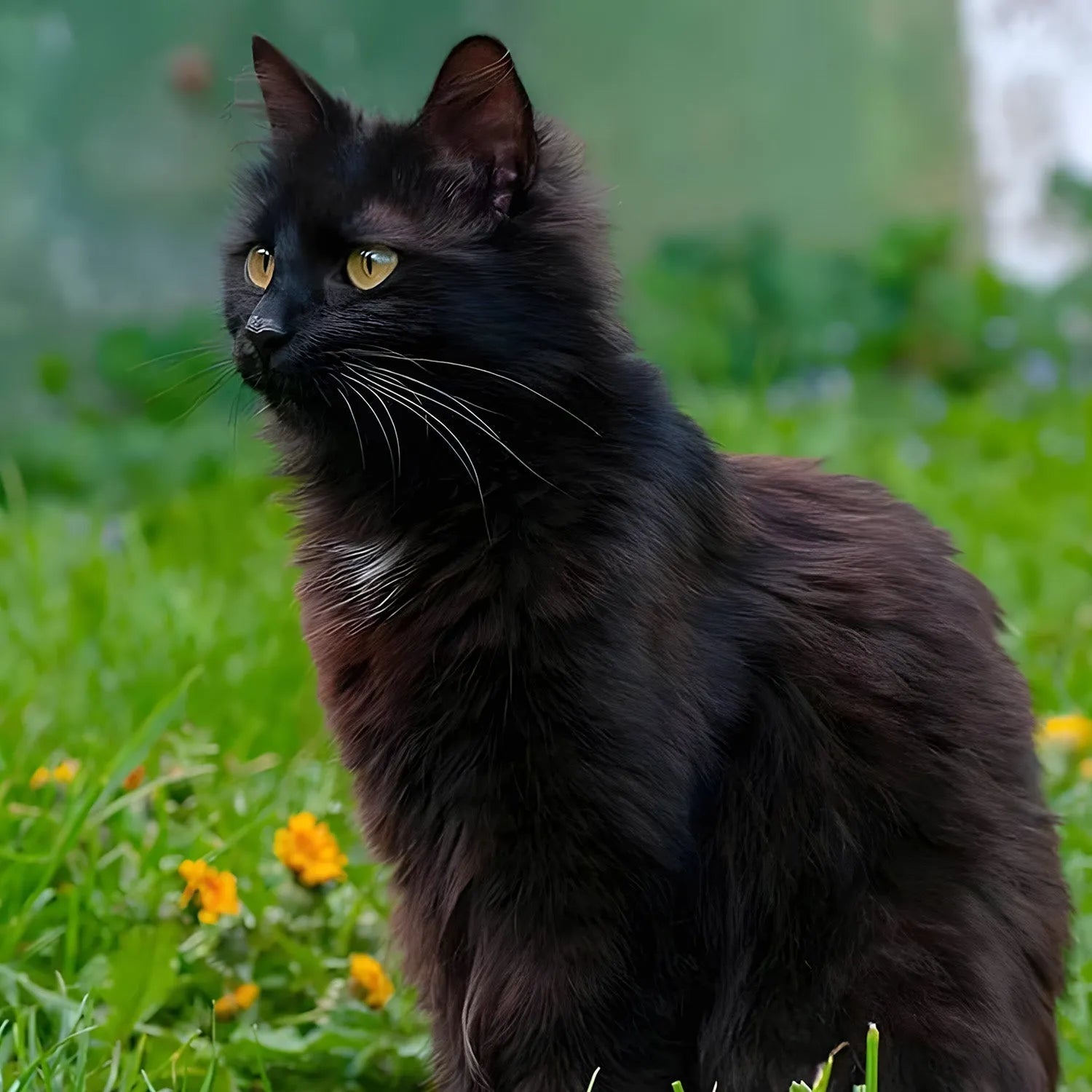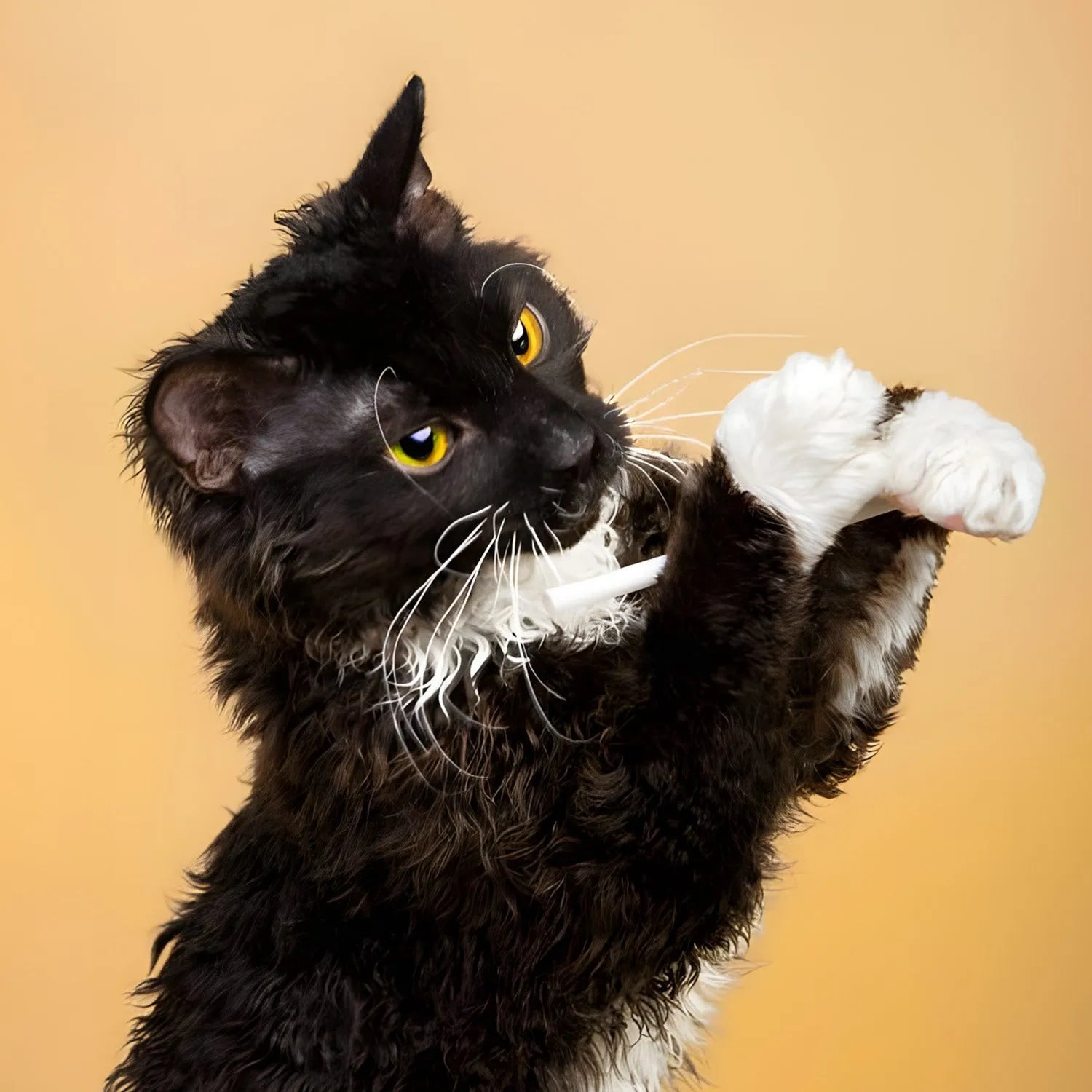Asian Semi-Longhair: The Graceful and Gentle Feline
Introduction
The Asian cat is a breed that exudes elegance and sophistication. With its sleek coat and captivating eyes, the Asian cat is not just a beauty to behold but also a loving and affectionate companion. This breed is known for its sociable nature and strong bonds with its human family. In this blog, we’ll explore the Asian cat’s lifestyle, behavior, grooming needs, trainability, and how it interacts with humans and other pets.
Ratings (1-5)
-
Environmental Adaptability: 4
-
Food Consumption: 3
-
Need for Companionship: 5
-
Trainability: 4
-
Tolerance of Children: 4
-
Ease of Domestication: 5
History and Origins
The Asian cat breed originated in the United Kingdom in the 1980s, resulting from the crossbreeding of a Burmese cat with other domestic cats, including the Chinchilla Persian. This crossbreeding was done to create a cat that had the personality of a Burmese but with a variety of different coat colors and patterns. The breed was initially developed by breeders who aimed to combine the Burmese's temperament with the Persian's coat qualities. The Asian cat is a relatively new breed, but it has quickly gained popularity due to its striking appearance and loving nature.
Physical Characteristics and Colors
Asian cats are medium-sized with a sleek, muscular build. They have a smooth and glossy coat that comes in various colors and patterns, including solid, tabby, and tortoiseshell. The breed's eyes are large, expressive, and typically come in shades of green, giving them a captivating look. Their head is wedge-shaped, with a short, broad muzzle and rounded ears that are set well apart. The breed's overall appearance is one of elegance and poise.
Lifestyle and Behavior
Asian cats are known for their lively and affectionate nature. They enjoy interacting with their human companions and are often described as being "dog-like" in their loyalty and attachment. This breed is active and playful, often seeking out attention and engagement from its owners. Asian cats are also curious and intelligent, making them excellent problem solvers and explorers. Despite their playful side, they also appreciate quiet moments and will happily curl up in their owner’s lap for a cuddle.
Trainability and Intelligence
Asian cats are highly intelligent and can be trained to perform various tricks and commands. They are quick learners and enjoy the mental stimulation that training provides. Positive reinforcement techniques, such as treats and praise, work best with this breed. Many Asian cats can be taught to fetch, sit, and even walk on a leash, making them an entertaining and engaging pet. Their intelligence also makes them adept at understanding their owner's routines and preferences.
Social Behavior and Human Interaction
Asian cats are sociable and thrive on human interaction. They form strong bonds with their families and are known for their affectionate and loving nature. This breed enjoys being the center of attention and will often follow its owners around the house, eager to be involved in daily activities. Asian cats are also known for their vocal nature, often communicating with their owners through a variety of sounds and purrs. They are particularly affectionate and enjoy being close to their human companions, whether it's sitting on a lap or sleeping next to them.
Compatibility with Children and Other Pets
Asian cats are generally good with children and can be excellent companions for families. Their playful and gentle nature makes them a great match for households with kids. They enjoy interactive play and are generally tolerant of children's antics, provided they are treated with respect. Asian cats also tend to get along well with other pets, including dogs, as long as they are properly socialized. Their sociable and adaptable nature allows them to integrate well into multi-pet households.
Grooming and Care
The grooming needs of an Asian cat are minimal due to their short, sleek coat. Weekly brushing is usually sufficient to keep their coat looking shiny and to remove any loose hairs. Regular dental care, ear cleaning, and nail trimming are also important to maintain their overall health. Despite their low-maintenance grooming needs, Asian cats enjoy the bonding time that grooming sessions provide, and it can be a great way to strengthen the bond between cat and owner.
Health and Lifespan
Asian cats are generally healthy with no specific genetic disorders associated with the breed. However, regular veterinary check-ups and a balanced diet are essential to maintain their health. With proper care, Asian cats can live up to 15 years or more. They are known for their robust health, but like all breeds, they can be prone to certain conditions such as dental issues or obesity, so regular monitoring is important.
Environmental Adaptability
Asian cats are adaptable cats that can thrive in various living environments. They are known for their resilience and can adjust well to different climates and household settings. Whether in an apartment or a house with a yard, Asian cats will find ways to entertain themselves and stay active. Their adaptable nature makes them well-suited to a wide range of living conditions, and they are equally comfortable as indoor or indoor/outdoor cats.
Feeding Requirements
A balanced diet is crucial for maintaining the Asian cat's health and energy levels. High-quality cat food that is rich in protein is recommended. Fresh water should always be available. Consult your veterinarian for specific dietary recommendations based on your cat's age, weight, and health needs. Monitoring their diet to prevent obesity is essential, as Asian cats can be prone to overeating if not properly managed.
Conclusion
The Asian cat is an elegant and affectionate breed that brings beauty and companionship to any household. Their intelligence, playful nature, and adaptability make them wonderful pets for families and individuals alike. If you're looking for a cat that combines a striking appearance with a loving and sociable personality, the Asian cat might be the perfect fit for you.
For more information about other cat breeds and pet care tips, stay tuned to our blog!
References:
-
Davidson, L. (2021). "The Development and Characteristics of the Asian Cat." *Journal of Feline Studies*, 35(3), 201-215.
-
Clarke, J. (2020). "Caring for Your Asian Cat: A Comprehensive Guide." *Cat Lover's Magazine*, July issue, pp. 30-40.
-
Thompson, M. (2019). "Health and Wellness in Asian Cats." *Veterinary Journal*, 79(2), 123-137.


